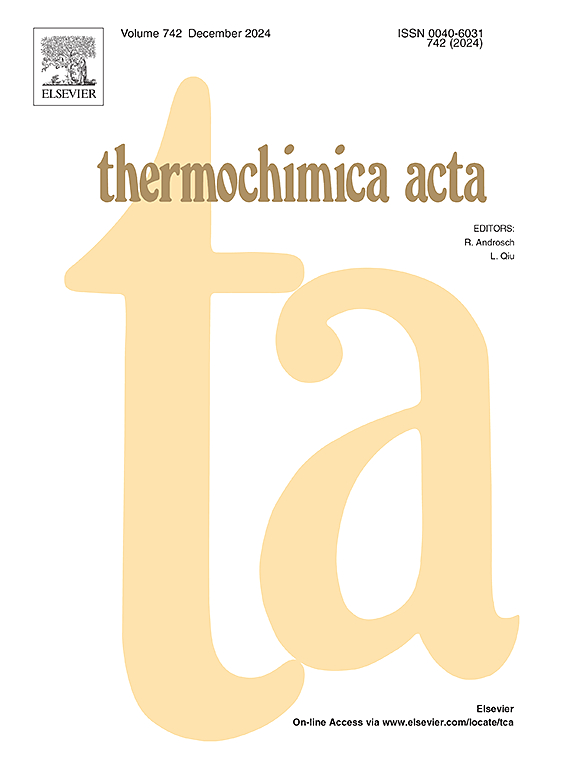Insights on the role of KFCT in phase transition and thermal decomposition mechanism of ammonium nitrate
IF 3.1
2区 化学
Q2 CHEMISTRY, ANALYTICAL
引用次数: 0
Abstract
AN-based products face challenges due to the phase transition at room temperature and structural instability. To better look into the thermal decomposition mechanism of AN, potassium ferrocyanide (KFCT) was selected as an additive to study its effect on the crystal form modulation and the thermal decomposition of AN. The results show that AN/KFCT co-crystal that does not undergo phase transition at room temperature was prepared. The thermal decomposition of AN/KFCT co-crystal is divided into three stages compared to that of pure AN. Thermal findings highlighted that Fe3+can reduce the thermal stability of AN. Co-crystallization enables Fe2+ to be encapsulated in crystals and therefore not oxidized during evaporative crystallization. Fe2+can inhibit the auto-catalytic process of AN by consuming auto-catalytic factor (NO2). Furthermore, the TG-MS was used to study the thermal decomposition mechanism of AN/KFCT co-crystal. The thermal decomposition pathways of AN/KFCT co-crystal was clear constructed.
KFCT在硝酸铵相变及热分解机理中的作用
由于室温下的相变和结构不稳定,基于人工智能的产品面临着挑战。为了更好地研究AN的热分解机理,选择亚铁氰化钾(KFCT)作为添加剂,研究其对AN的晶型调制和热分解的影响。结果表明,制备出了室温下不发生相变的AN/KFCT共晶。与纯AN相比,AN/KFCT共晶的热分解分为三个阶段。热结果表明,Fe3+会降低AN的热稳定性。共结晶使Fe2+被包裹在晶体中,因此在蒸发结晶过程中不会被氧化。Fe2+通过消耗自催化因子(NO2)来抑制AN的自催化过程。此外,利用TG-MS研究了AN/KFCT共晶的热分解机理。明确了AN/KFCT共晶的热分解途径。
本文章由计算机程序翻译,如有差异,请以英文原文为准。
求助全文
约1分钟内获得全文
求助全文
来源期刊

Thermochimica Acta
化学-分析化学
CiteScore
6.50
自引率
8.60%
发文量
210
审稿时长
40 days
期刊介绍:
Thermochimica Acta publishes original research contributions covering all aspects of thermoanalytical and calorimetric methods and their application to experimental chemistry, physics, biology and engineering. The journal aims to span the whole range from fundamental research to practical application.
The journal focuses on the research that advances physical and analytical science of thermal phenomena. Therefore, the manuscripts are expected to provide important insights into the thermal phenomena studied or to propose significant improvements of analytical or computational techniques employed in thermal studies. Manuscripts that report the results of routine thermal measurements are not suitable for publication in Thermochimica Acta.
The journal particularly welcomes papers from newly emerging areas as well as from the traditional strength areas:
- New and improved instrumentation and methods
- Thermal properties and behavior of materials
- Kinetics of thermally stimulated processes
 求助内容:
求助内容: 应助结果提醒方式:
应助结果提醒方式:


